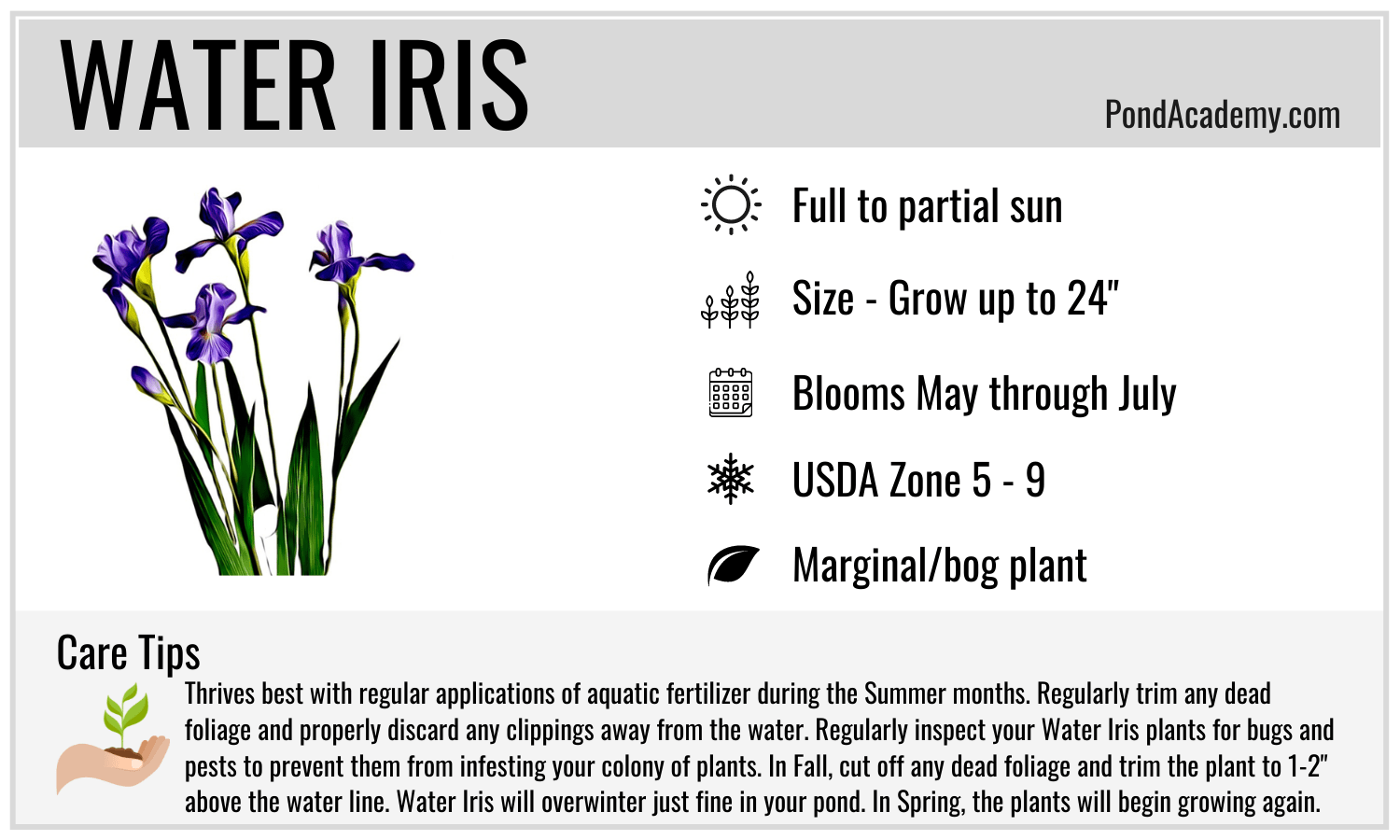7 Best Pond Bog Plants (Plus Free Plant Care Cards)
Pond Academy is reader-supported. Buying through links on our site may earn us an affiliate commission. As an Amazon Associate I earn from qualifying purchases.
Pond bog plants create a beautiful and seamless transition from water to land. Plus, they filter your pond's water and help prevent erosion.
But to prevent water quality issues, it's important to choose the right bog plants for your pond and properly care for them.
So, let's look at 7 of the best pond bog plants for any pond, plus how to plant and best care for each.
Pond Bog Plants Comparison Chart
*Buying through links in this chart may earn us a commission at no additional cost to you.
Get Our Best Pond Tips Sent to Your Inbox for Free!
Join thousands of others and learn from our decades of pond building and maintenance experience! Your pond will thank you!
By subscribing you agree to receive emails from PondAcademy.com. We will always respect your privacy and you can unsubscribe at any time.
Best Pond Bog Plants
The best pond bog plants help filter and clean pond water, consume excess nutrients, oxygenate the water, and are easy to care for. Examples include Calla Lilies, Creeping Jenny, Horsetail, Lemon Bacopa, Pickerelweed, Umbrella Palm, and Water Iris.
Many pond bog plants fit the criteria above, so it typically comes down to choosing the plants you feel look the best along your water's edge. Don't downplay the aesthetic value of bog plants!
Let's take a closer look at our favorite pond bog plants and find the best one(s) for you and your pond!
Calla Lilies (Zantedeschia aethiopica)
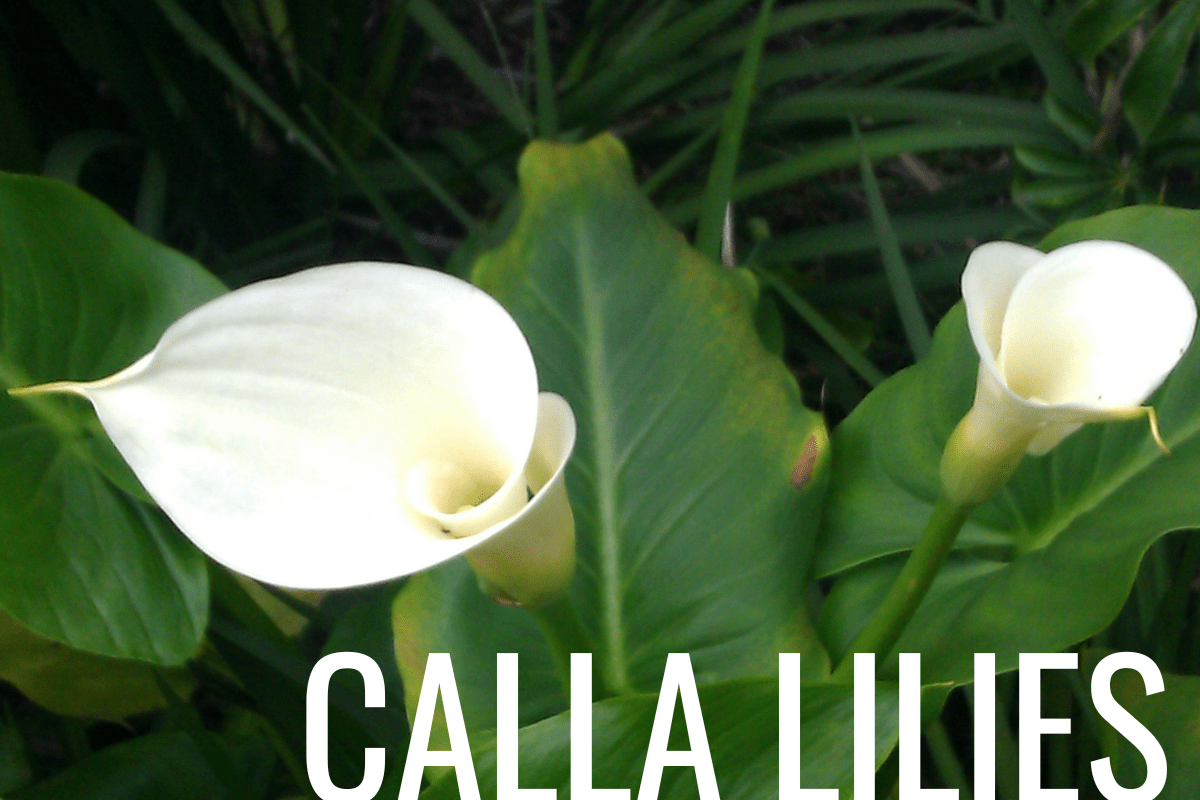
From its elegant, trumpet-shaped white flowers to the dark, emerald-green foliage forming a wavy pattern over the leaves, there is a lot to love about the Calla Lily plant.
You will find Calla lilies growing abundantly from late spring through summer. The beautiful cut flowers from this plant can complement your interior decor, as well.
That said, it is important to note that all parts of the calla lily are poisonous, so keep the plant out of reach from children and pets.
For koi ponds, ensure that these pond plants are not submerged to depths where your fish could easily access and feed on them.
![]() Calla Lilies Quick Facts
Calla Lilies Quick Facts
This marginal/bog plant should be planted in an area that receives full sun to partial shade. It is hardy in USDA Zones 8-11. The Calla Lilies plant can grow up to 12 to 24 inches and typically blooms late spring through summer with white, pink, yellow, purple, or black flowers.
Calla Lilies Planting Tips
- For best results, plant your calla lilies in moist soil in the boggy areas of your pond. The ideal planting depth is 2 inches. Calla lilies thrive in a moist environment, so be sure to water them during extended dry spells. They are better off in full sun, except for warmer zones where you may want to give them partial shade.
- I recommend that you use extra-large fabric planters when putting your calla lilies in the pond. With heavy loam soil in the fabric planter, plant two to three calla lilies in the container. You can then place the container in the part of your pond where it will get the most sun. When placing in the pond, ensure that the water is about an inch above the roots.
- You will get the best bloom and rich plants if you fertilize once a month, preferably June through August.
Check out our full guide on how to plant calla lilies in a pond, properly care for it, and much more!
Calla Lilies Plant Care Card
Click the Calla Lilies care card below and save the PDF to your computer or phone. Print the 3x5 card or access it right from your mobile device - anytime, anywhere. It's 100% free!
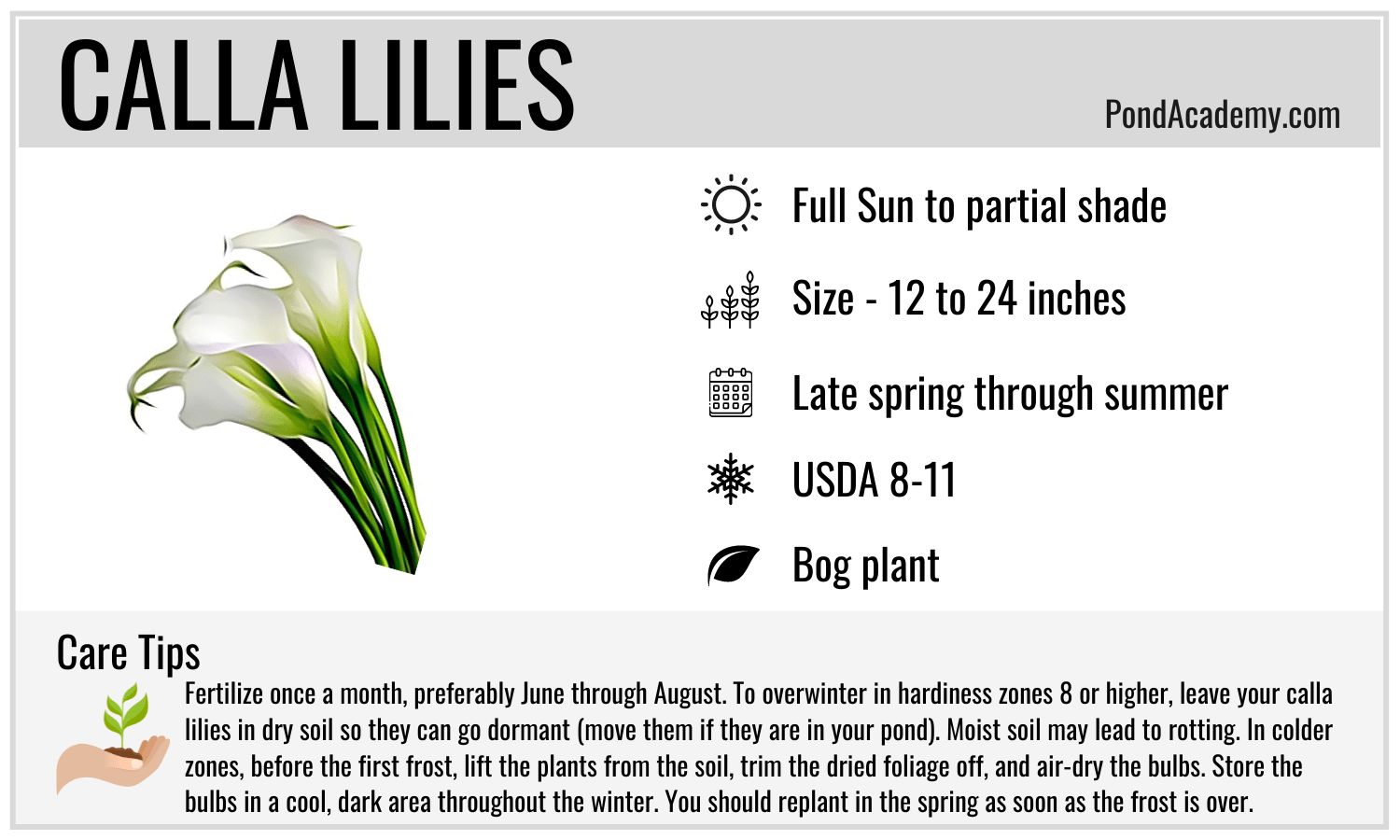
Creeping Jenny (Lysimachia nummularia)
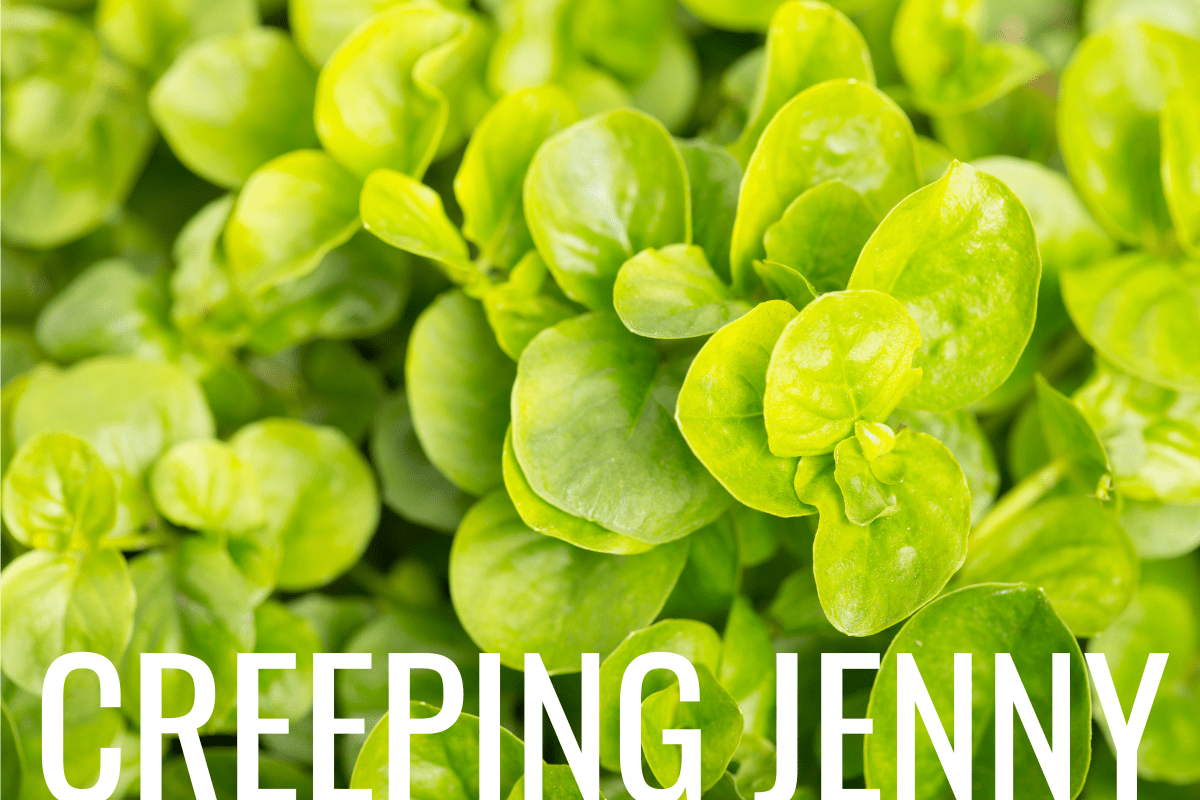
Creeping Jenny should be on your list if you are considering adding an oxygenating pond plant to your water garden.
The characteristic green foliage adds beauty to your pond by cascading down the rockery of your waterfall, emerging from the shallow edges of your pond, or spreading down the sides of a planting container.
![]() Creeping Jenny Quick Facts
Creeping Jenny Quick Facts
This marginal/bog plant should be planted in an area that receives full sun to partial shade. It is hardy in USDA Zones 4-10. The Creeping Jenny plant can grow up to 1 to 4 inches tall and a 12 to 18 inch spread and typically blooms in Summer.
Creeping Jenny Planting Tips
- Plant Creeping Jenny directly into your pond or water garden in shallow water of up to 2 inches. This will serve as an ideal habitat for small pond fish, insects, and frogs.
- You can also plant it as fillers in-between waterfalls or rocks, where they fill spaces, or as a trailing plant in hanging baskets, window boxes, or containers. Creeping Jenny is also perfect for areas that allow it to cascade, for instance, over a bank or a wall.
- When planting, it is best to add the plant to each planting container (containing your preferred aquatic planting media) loosely. Fertilize the bottom half of the planting media, place the plant in the pot ensuring it goes into the center with the roots spread out over the planting media. Then add more media up to 2/3 to the top. In most cases, the crown of the plant, connecting the stems and the roots, can go as far as 1-2 inches below the surface of the planting media.
- For best results, do not use bagged potting mix or similar lightweight soils – they have high floating tendencies and may muddy your pond water.
Check out our full guide on how to plant creeping jenny in a pond, properly care for it, and much more!
Creeping Jenny Plant Care Card
Click the Creeping Jenny care card below and save the PDF to your computer or phone. Print the 3x5 card or access it right from your mobile device - anytime, anywhere. It's 100% free!
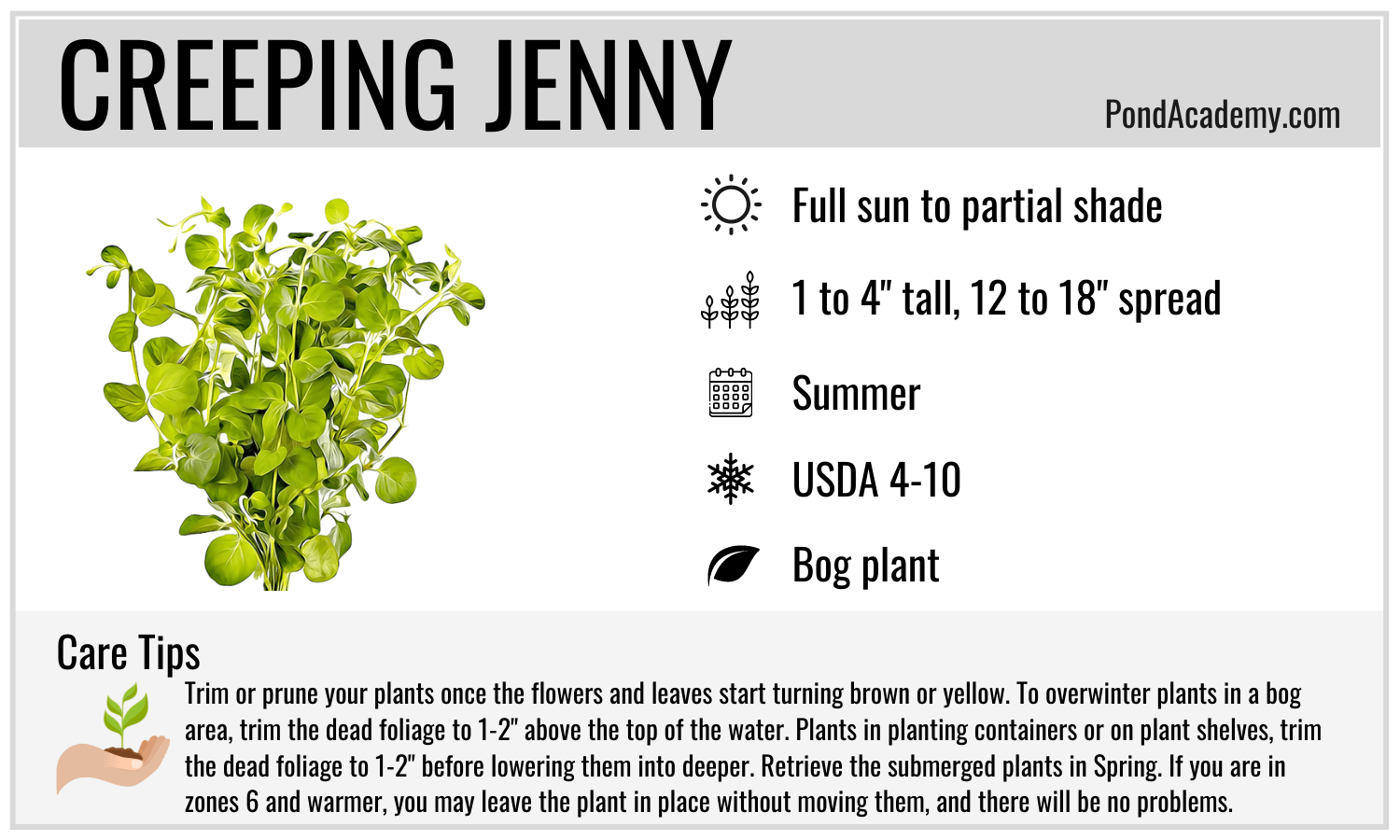
Horsetail (Equisetum)
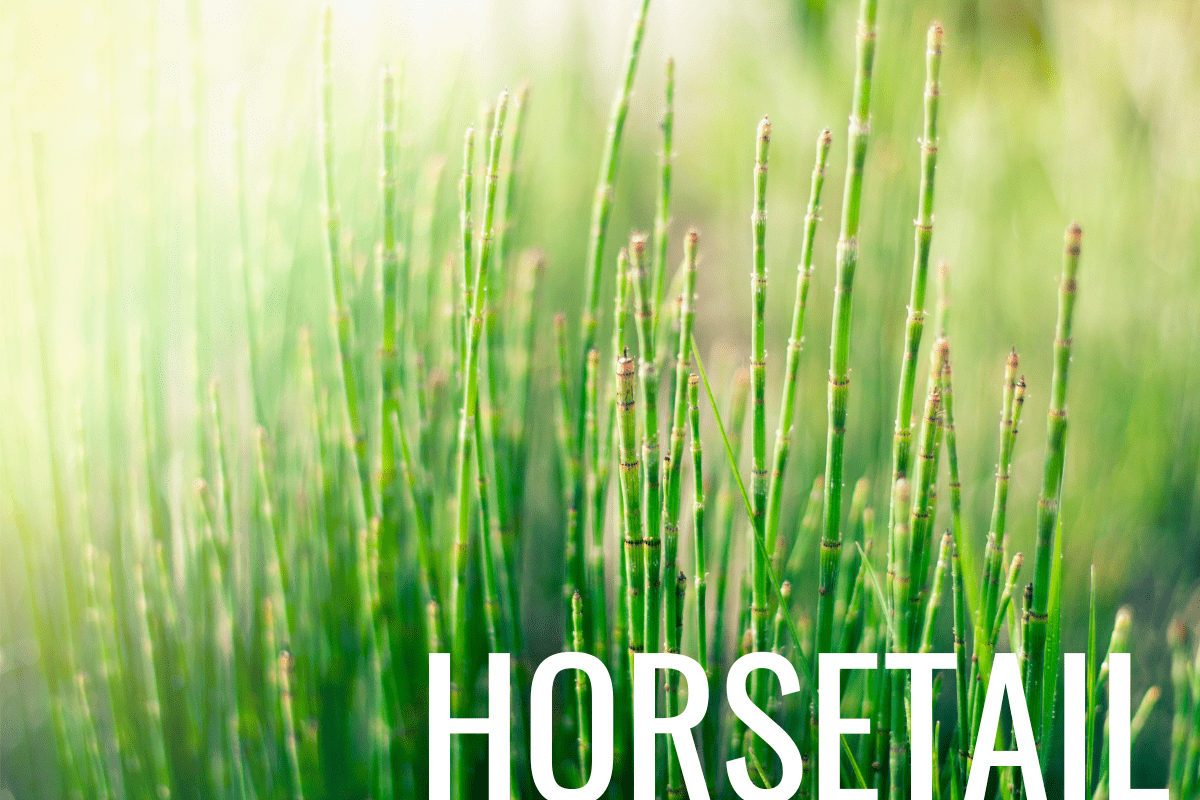
The horsetail plant is well known for its medicinal purposes that date back several thousands of years. Even more amazing, botanists consider the plant a living fossil, with its earliest known existence predating even the dinosaurs - 350 million years ago!
Horsetail, also commonly known as horse bristle or snake grass, is native to Europe. Horsetail is identifiable by its jointed, hollow green stems, which are furrowed with black bands. It is often mistaken for bamboo.
You can use horsetail as an accent plant to complement your pond’s rocky edge, as a partial cover for your pond or pond equipment, or anything else your imagination can dream up!
The Horsetail plant comes in various species, but the Horsetail Rush (Equisetum Hyemale) is the most popular and most used in backyard ponds.
![]() Horsetail Quick Facts
Horsetail Quick Facts
This marginal pond plant should be planted in an area that receives full sun to partial shade. It is hardy in USDA Zones 4-12. The Horsetail plant can grow up to 4 feet tall (sometimes more) and typically blooms year round with green flowers.
Horsetail Planting Tips
- Horsetail should be planted in a container with a depth and width of roughly 12 inches. Fill the container with loam topsoil (not rocks) and plant the horsetail rush into the bottom of the container. Submerge the container on a stable shelf in your pond, leaving up to an inch of water above the soil. Keep the roots contained in the pot as the horsetail plant likes to roam.
- Horsetail reed grows well in full sun to partial shade.
Check out our full guide on how to plant horsetail in a pond, properly care for it, and much more!
Horsetail Plant Care Card
Click the Horsetail care card below and save the PDF to your computer or phone. Print the 3x5 card or access it right from your mobile device - anytime, anywhere. It's 100% free!
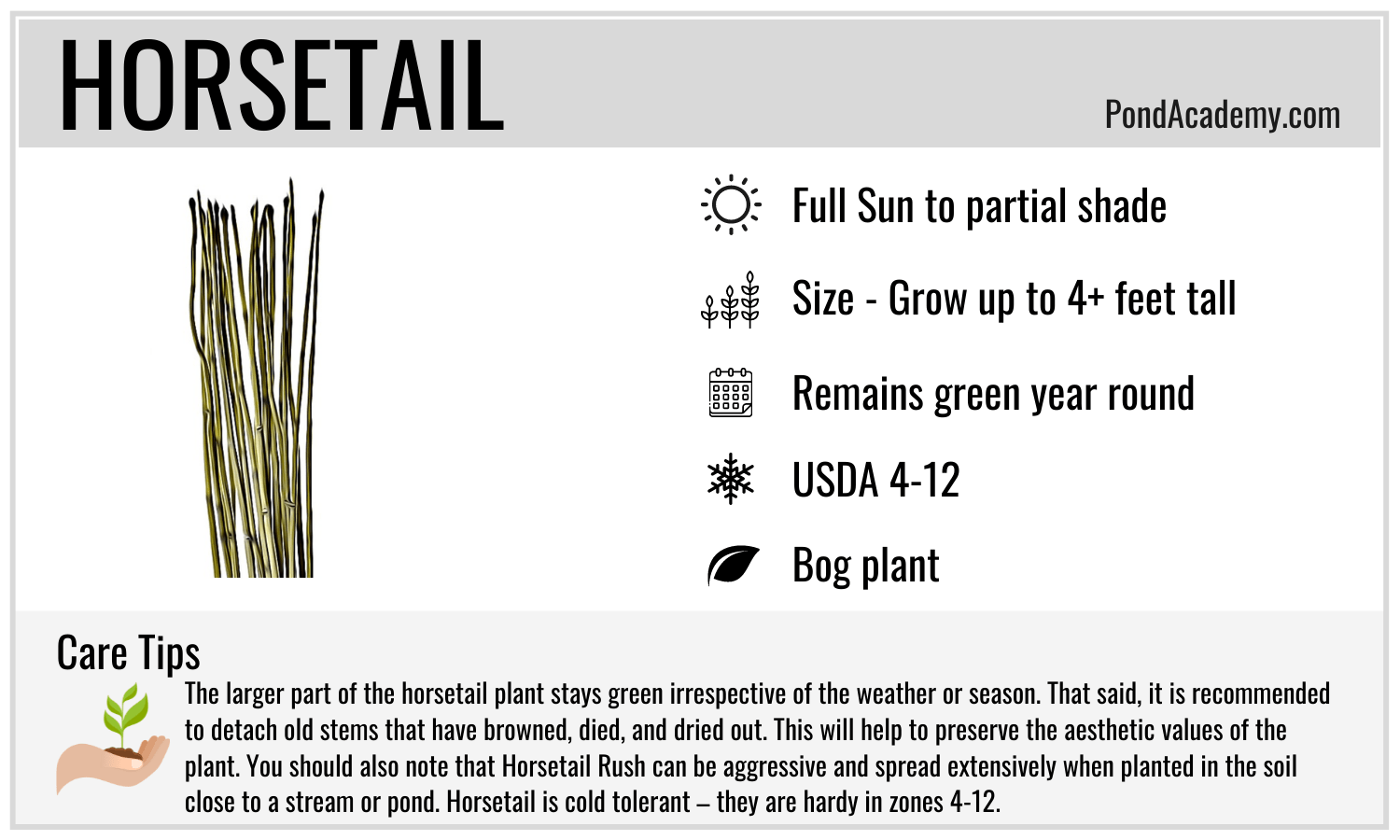
Lemon Bacopa (Bacopa Caroliniana)
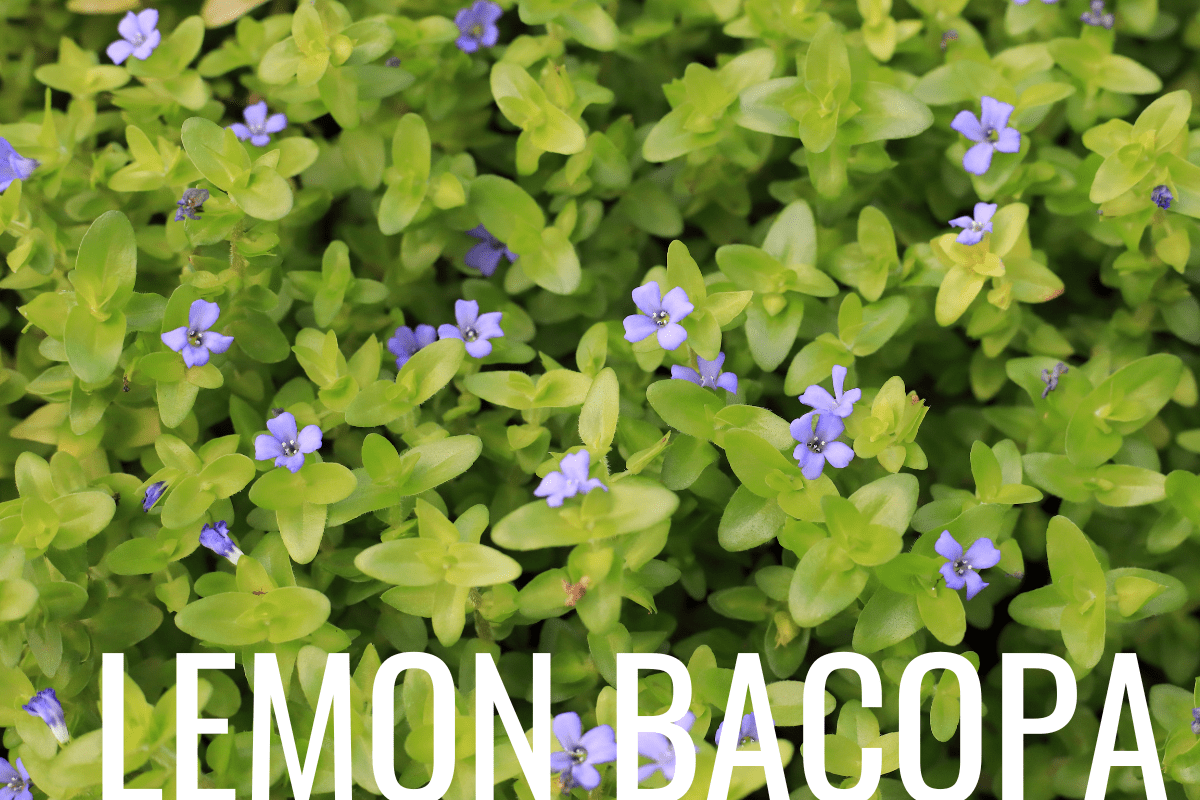
Lemon Bacopa is a very interesting pond plant that can mostly be found in the southern United States, South Korea, and even some parts of Europe.
The lemon bacopa is a very easily recognizable plant. It features simple yet distinct blue five-leave flowers and has a lemony scent. It makes a great filler plant between waterfall rocks and provides a soft transition along your pond's edge.
The roots of this plant are extremely useful to your pond's water and the environment – utilizing excess nitrogen, phosphorus, and heavy metals - thus acting as a purifier for your pond!
![]() Lemon Bacopa Quick Facts
Lemon Bacopa Quick Facts
This marginal/bog plant should be planted in an area that receives full sun to partial shade. It is hardy in USDA Zone 6 - 11. The Lemon Bacopa plant can grow up to 6+ inches tall with 2 foot spread and typically blooms early April through late September, depending on temperature with purple or blue flowers.
Lemon Bacopa Planting Tips
- Lemon bacopa can be planted in containers with loamy soil and placed on pond shelves as an emergent plant or placed at the bottom of your pond as a submerged plant. I recommend planting in pots as opposed to directly in your pond's substrate to help contain growth.
Check out our full guide on how to plant lemon bacopa in a pond, properly care for it, and much more!
Lemon Bacopa Plant Care Card
Click the Lemon Bacopa care card below and save the PDF to your computer or phone. Print the 3x5 card or access it right from your mobile device - anytime, anywhere. It's 100% free!
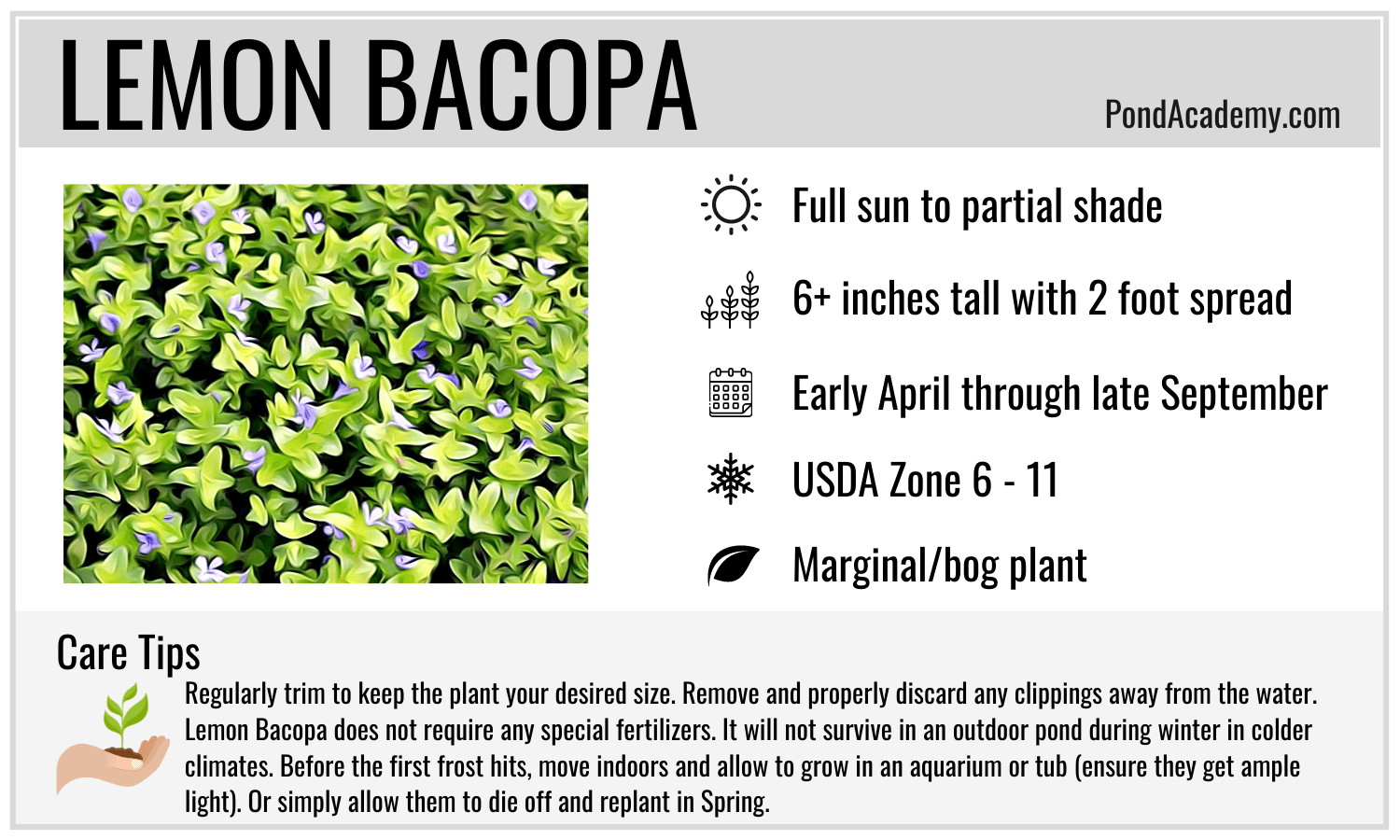
Pickerelweed (Pontederia Cordata)
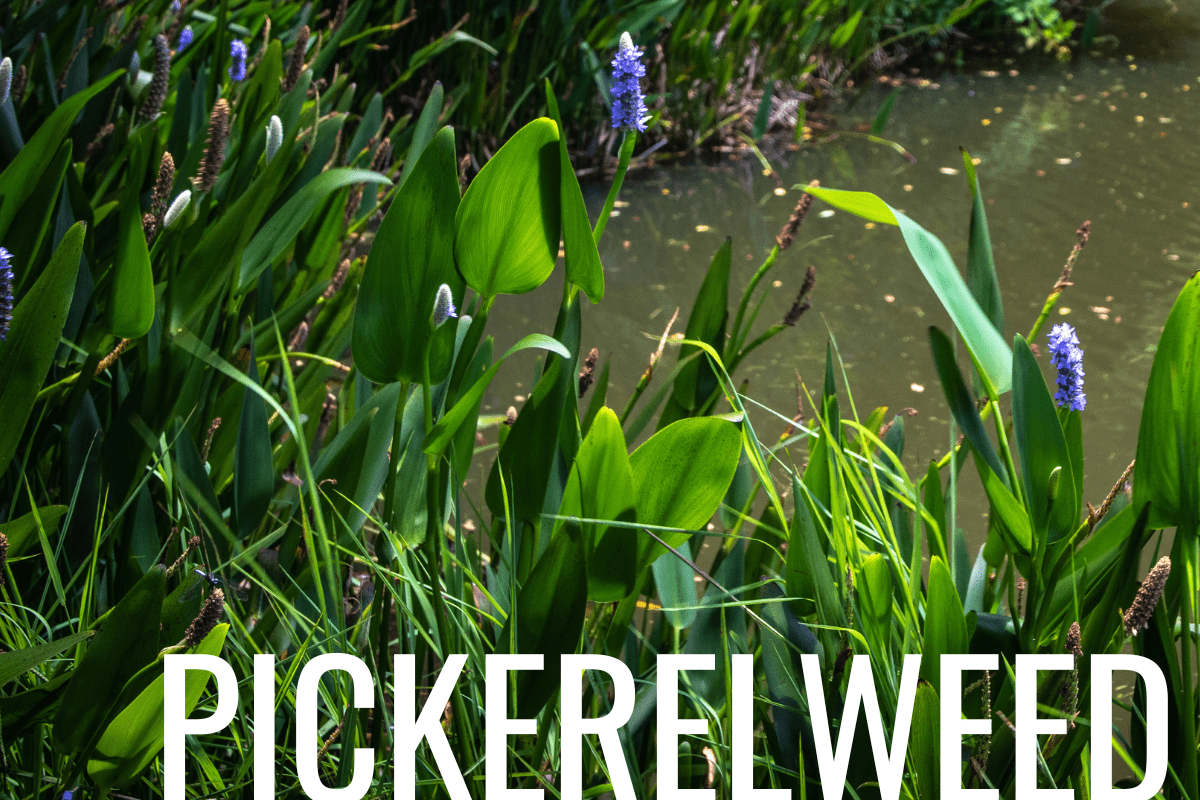
Pickerelweed is a beautiful, sizeable plant found throughout Canada, North America, and the Caribbean!
The name for this plant is derived from the pickerel fish, commonly known as the northern pike, which finds shade among the thick stems and leaves of this plant.
The nectar this plant produces attracts bees, butterflies, dragonflies, and damselflies, which not only adds a living element to your pond but is also good for the environment.
![]() Pickerelweed Quick Facts
Pickerelweed Quick Facts
This marginal/bog plant should be planted in an area that receives full sun. It is hardy in USDA Zone 3 - 10. The Pickerelweed plant can grow up to 4 ft tall in the right conditions and typically blooms June through late October with blue or violet flowers.
Pickerelweed Planting Tips
- Pickerelweed is best planted in pots with potting media and a thin layer of small gravel on top (to keep the media from floating out into your pond) and placed around the marginal areas of your pond in 3 to 5 inches of water. Make sure it's in a spot that gets ample sunlight.
Check out our full guide on how to plant pickerelweed in a pond, properly care for it, and much more!
Pickerelweed Plant Care Card
Click the Pickerelweed care card below and save the PDF to your computer or phone. Print the 3x5 card or access it right from your mobile device - anytime, anywhere. It's 100% free!
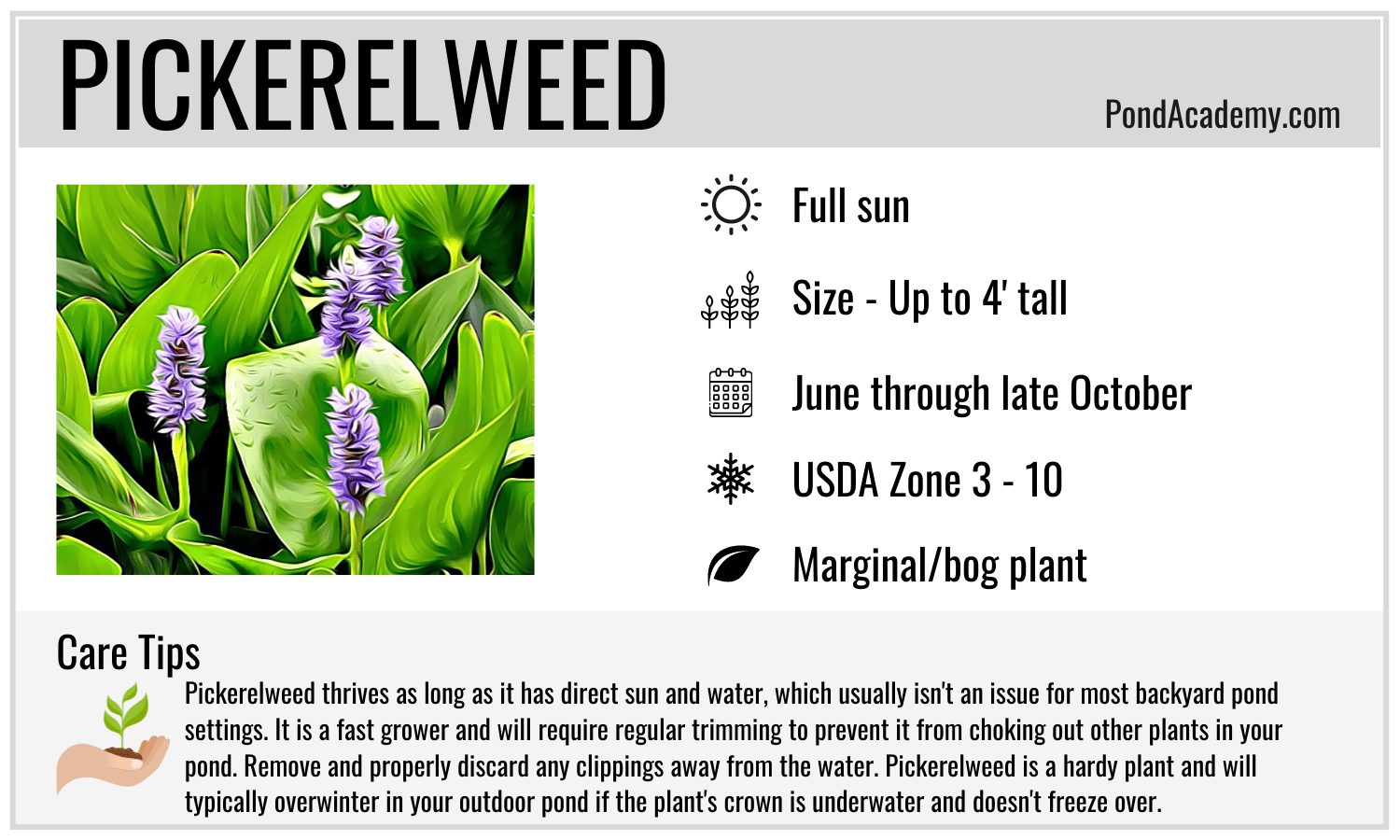
Umbrella Palm (Cyperus Alternifolius)
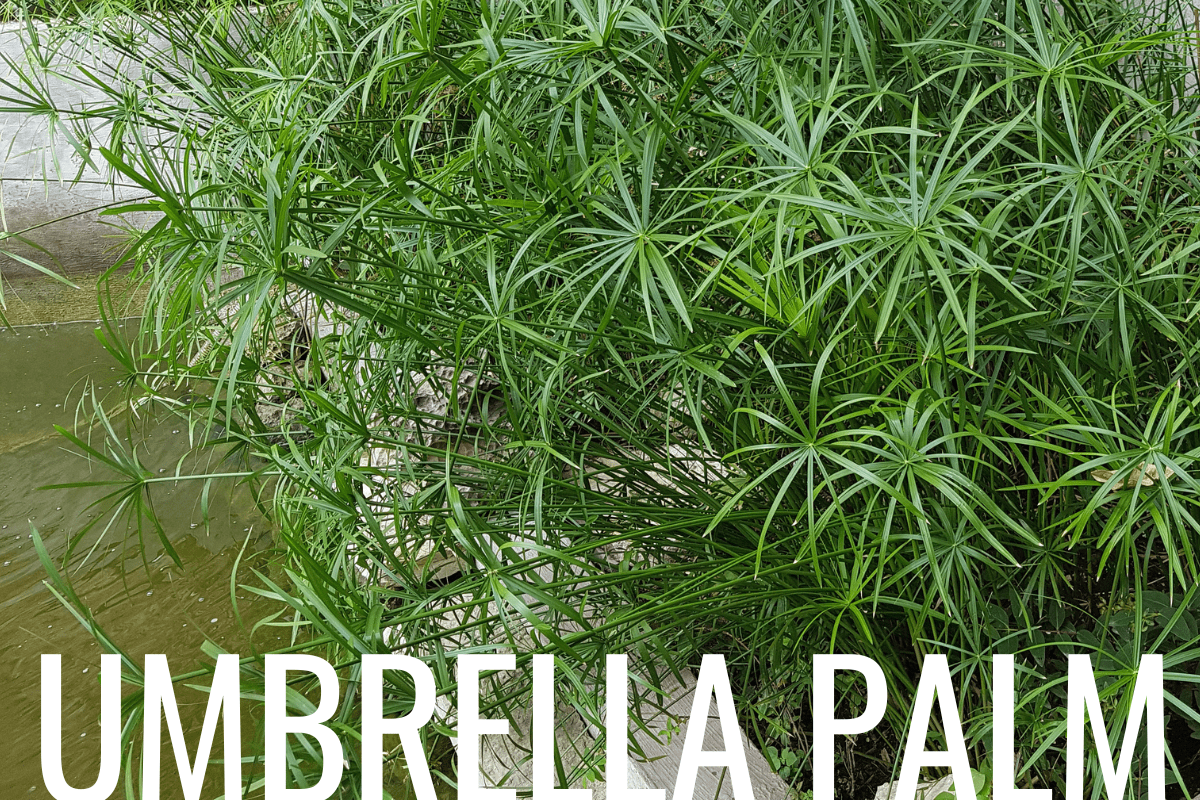
Umbrella Palm, often referred to as just "palm" or sedge, is a tropical pond plant that is super easy to grow and care for.
This tropical plant features long stiff stems and leaves that fan out, mimicking the look of an umbrella. This impressive plant's height will make it stand out, sometimes reaching 5-plus feet! If that's too much for your pond area, a dwarf umbrella palm reaches about 2 feet tall.
Remember, since this is a tropical plant, it will thrive in warmer climates and must be brought inside over winter.
![]() Umbrella Palm Quick Facts
Umbrella Palm Quick Facts
This marginal/bog plant should be planted in an area that receives full sun to partial shade. It is hardy in USDA Zone 8 - 10. The Umbrella Palm plant can grow up to 5 ft. tall and typically blooms July through August with brown flowers.
Umbrella Palm Planting Tips
- Umbrella Palm is best planted in pots with potting media and a thin layer of small gravel on top (to keep the media from floating out into your pond) and placed around the marginal areas of your pond in up to 6 inches of water. Make sure it's in a spot that gets ample sunlight. Planting in a container will make it easy to control growth and remove the plant to overwinter.
Check out our full guide on how to plant umbrella palm in a pond, properly care for it, and much more!
Umbrella Palm Plant Care Card
Click the Umbrella Palm care card below and save the PDF to your computer or phone. Print the 3x5 card or access it right from your mobile device - anytime, anywhere. It's 100% free!
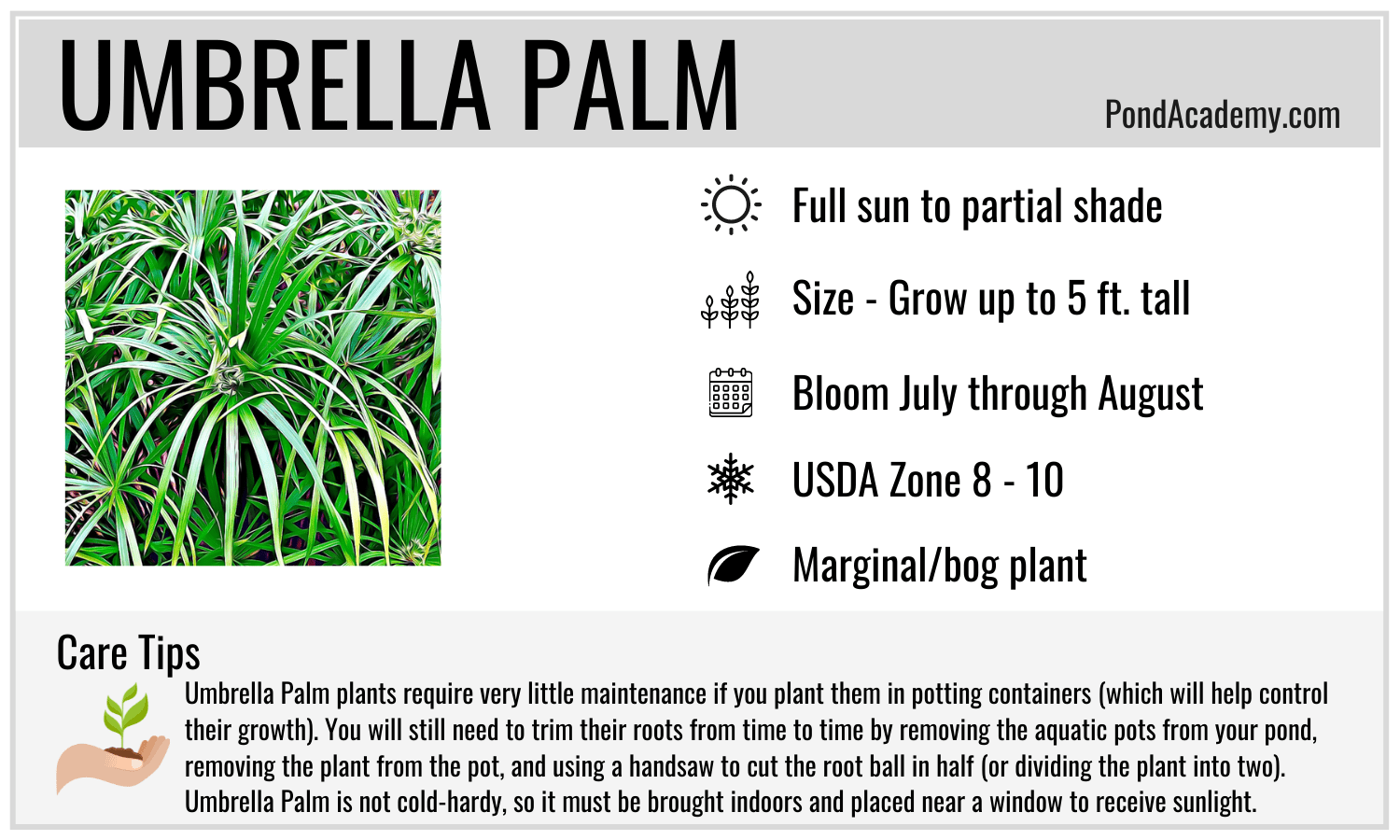
Water Iris (Iris Laevigata)
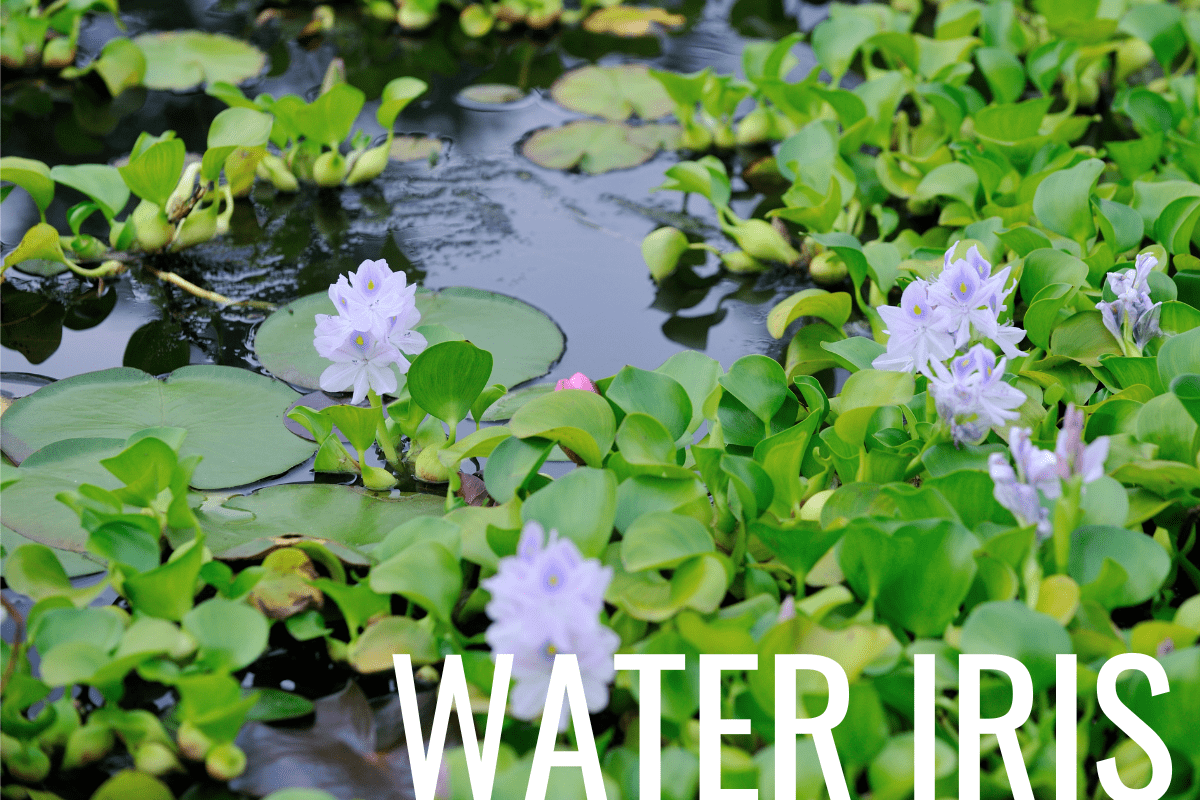
Water Iris, sometimes referred to as Rabbit's Ear Iris, is a semi-aquatic plant that will add beauty and color to your backyard pond!
If you are creating an ornamental wildlife pond, then this is the perfect addition to it! This plant will make an excellent transition from the edge of your pond to the landscaping around it (where they even prevent erosion).
In addition to this, water irises help remove toxins and keep pond water clean and clear. And if you're worried about your fish eating them, you'll be happy to hear that they typically tend to avoid them!
![]() Water Iris Quick Facts
Water Iris Quick Facts
This marginal/bog plant should be planted in an area that receives full to partial sun. It is hardy in USDA Zone 5 - 9. The Water Iris plant can grow up to 24 inches and typically blooms May through July with whte or blue flowers.
Water Iris Planting Tips
- Water Iris should be planted in a one-gallon or larger container with a rich sandy/soil mix and placed in your pond marginal area with around 3" of water covering the pot. Fertilize the plants once a month throughout Summer.
Check out our full guide on how to plant water iris in a pond, properly care for it, and much more!
Water Iris Plant Care Card
Click the Water Iris care card below and save the PDF to your computer or phone. Print the 3x5 card or access it right from your mobile device - anytime, anywhere. It's 100% free!
